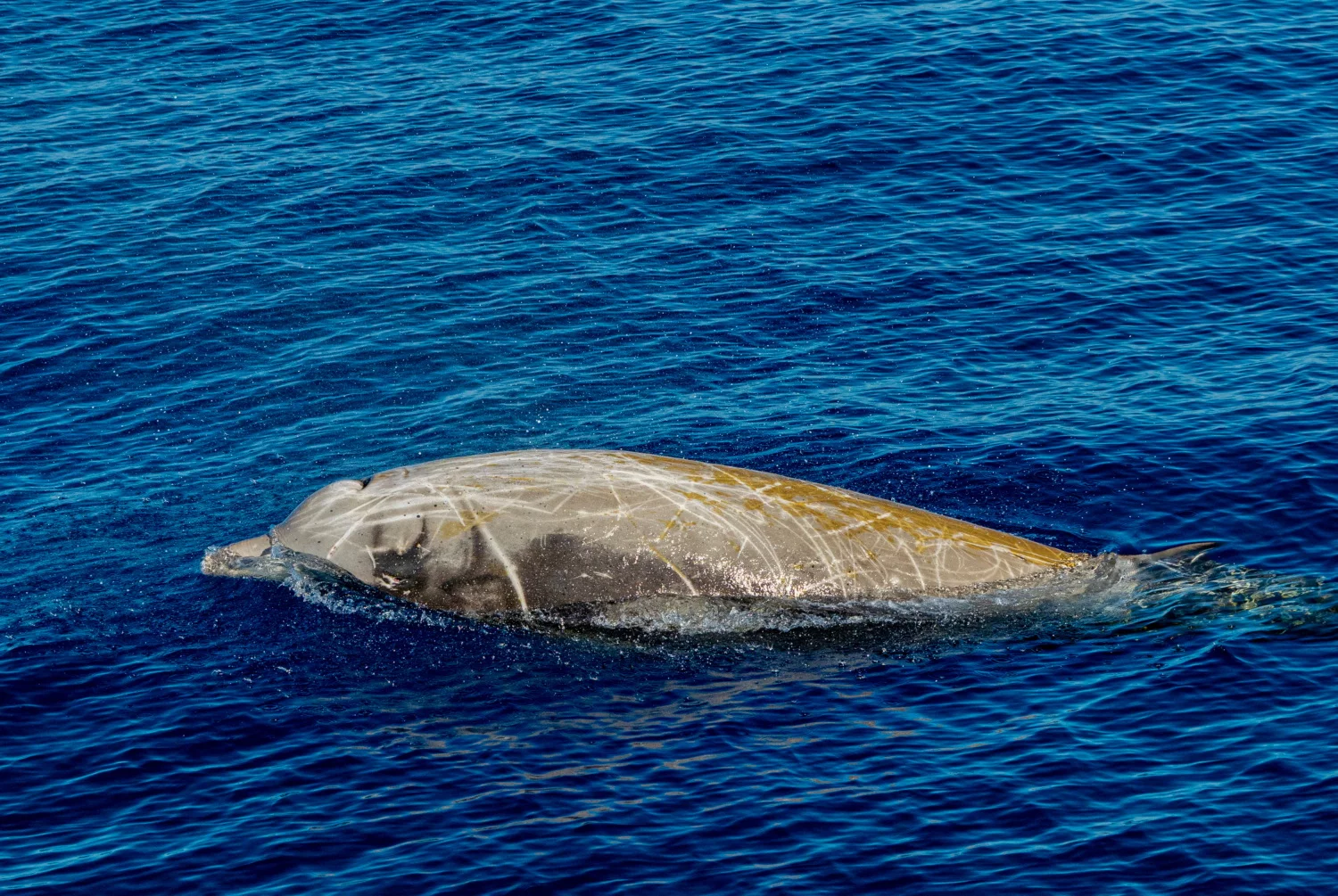Habitat Directive: Annex IV. MED Conservation Status: Unfavourable-Bad
IUCN Red List: Least concern (LC) at global level, although an abundance estimate does not exist to date because it is a very difficult species to monitor. In the Mediterranean it is ‘Data Deficient’ (DD), because there are no reliable data on population size and trends (with the exception of the resident population in the Ligurian Sea, which is about 100 individuals.
Sighting possibilities
It prefers deep waters in the open seas, at underwater escarpments and canyons. Although it is a cosmopolitan species, it frequents in most of the world’s temperate, subtropical and tropical waters, it is not easy to observe. The Mediterranean population is distinct from the Atlantic one and it frequents different parts of the basin in specific areas corresponding to its habitat. It is frequent in the Alboran Sea and along the coast of Ionian Greece. In Italian waters it is most frequent in the north-western Ligurian Sea and the central Tyrrhenian Sea.
How to recognise it at sea
Sizes: males reach 6 meters and 2-3 tonnes. Females are smaller, up to 5 meters and 1 tonne. It has a robust build with a variable livery, which depends on age and sex. Newly hatched and sexually immature juveniles are uniformly dark grey or brown, with a slightly lighter belly. Adults are slate-grey to reddish-brown/orange-yellow, with a darker region surrounding the eye. As they grow older, they become paler and develop a more significant indentation on the top of the head and, as the grampus, the body accumulates more scratches and scars, caused by the teeth of other males in various clashes. The head is tapered and the dorsal fin is small and set back from the median. It is not, in fact, a very fast species, reaching ‘barely’ 5 km/h. At sea, it is difficult to observe because of its cryptic behaviour: it never emerges much from the surface of the water and its breath is small and inconspicuous.
Biological notes
An odontocete cetacean, it belongs to the Ziphiidae family. It feeds mainly on cephalopods and occasionally on fish. Adult males have two small cone-shaped teeth protruding from the tip of the lower jaw, which are often used for fighting. It reaches sexual maturity between 7 and 11 years. Birth can occur throughout the year, but occurs most often during the spring. After a one-year gestation period, females give birth to single young every two to three years. The average lifespan is at least 35 years, but can reach up to 60 years. It is generally found in small groups of 2-5 individuals. Given its frequent and long deep-water dives, there is little information on the biology of the species.
Curiosities
- Researchers use scratches and scars for individuals’ photo identification. Indeed, it is possible to recognize various specimens by the ‘drawings’ on the body
- It has exceptional diving capabilities: it can hold its breath for more than 2 hours and reach a depth of over 2,0000 meters to hunt squid. The deepest known dive was 3,000 metres and the longest recorded was 222 minutes, almost 4 hours!/li>
- The infestation of microscopic diatoms and algae causes the reddish-brown or yellow-orange colouration of the body is caused.
- This phenomenon is related to the concomitance of military exercises and the use of particularly powerful sonars that induce the animals to ascend too quickly, resulting in gas embolisms; in the Mediterranean, the increased use of compressed air (airgun) for geophysical prospecting is considered a threat to the species.





